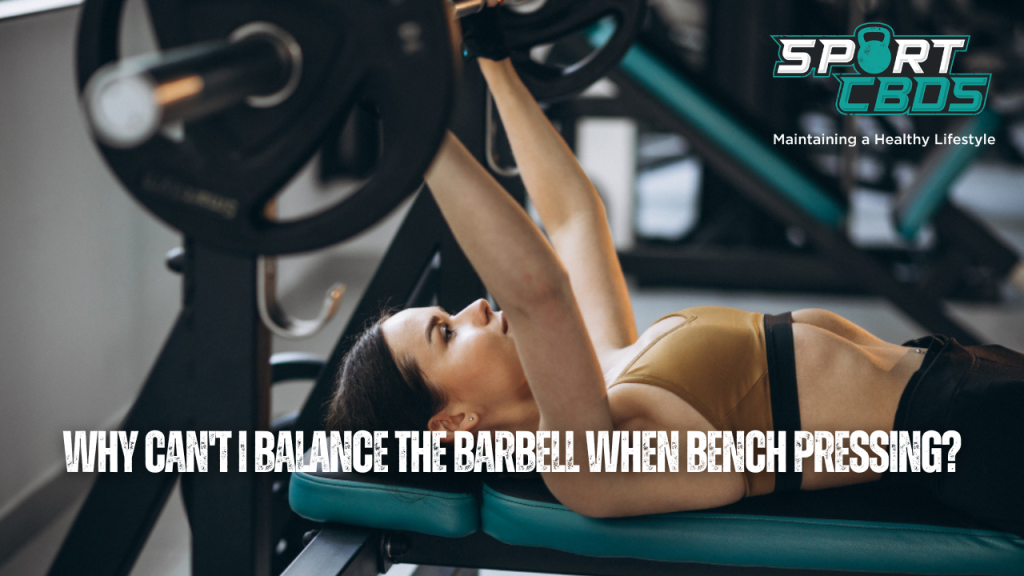
Feeling The Burn: Why Do I Feel Shoulder Press in Triceps?
The shoulder press is a fundamental exercise in strength training, targeting primarily the deltoid muscles in the shoulders.
However, it’s not uncommon for individuals to feel this exercise in their triceps. Understanding why this happens is crucial to ensuring you’re getting the most out of your workout and not straining unintended muscles.
This article will delve into the anatomy of the shoulder press, the role of the triceps, and why you might feel this exercise in your triceps.
Why Do I Feel Shoulder Press in Triceps?
Feeling the shoulder press in your triceps is a common experience due to the anatomy of the exercise. The shoulder press is a compound movement that engages multiple muscle groups, including the deltoids in your shoulders and the triceps in your upper arms. The triceps are responsible for extending the elbow, which is a crucial part of the shoulder press movement. However, if you’re feeling the exercise predominantly in your triceps, it could be due to factors like incorrect weight selection, poor form, or muscle imbalances. For instance, if your deltoids are weaker than your triceps, your body might naturally rely more on the triceps to lift the weight, leading to overuse and strain on the triceps. Therefore, understanding your form and muscle engagement is key to effectively performing the shoulder press and targeting the intended muscles.
Anatomy of the Shoulder Press
The shoulder press is a compound exercise, meaning it engages multiple muscle groups. The primary muscles involved are the deltoids, located in your shoulders, and the triceps, situated in the upper arm. However, several other muscles act as stabilizers, including the trapezius, serratus anterior, and the muscles of the rotator cuff.
The deltoids are the main movers in the shoulder press, responsible for the lifting motion. They consist of three heads – anterior, lateral, and posterior, all of which are engaged during the exercise.
The triceps also play a significant role in the shoulder press. They are located on the back of your upper arm and consist of three heads – the long head, lateral head, and medial head. The triceps are primarily responsible for extending the elbow, which is a crucial part of the shoulder press movement.
When you press the weight overhead, your triceps work to straighten your arm, assisting the deltoids. Therefore, it’s normal to feel some engagement in your triceps during a shoulder press. However, if you’re feeling the exercise predominantly in your triceps, it might be a sign that your form needs adjustment or that there’s a muscle imbalance that needs addressing.
In the next section, we’ll explore some common mistakes in performing the shoulder press and how they can lead to undue tricep strain.
Common Mistakes in Performing Shoulder Press
Performing the shoulder press correctly is crucial to effectively target the shoulder muscles and avoid unnecessary strain on the triceps and other areas. Here are some common mistakes people make:
- Incorrect Weight Selection: Selecting a weight that’s too heavy can lead to improper form and overcompensation by other muscles. If your triceps are taking over during the shoulder press, it might be a sign that you’re lifting too heavy. Try reducing the weight and focusing on engaging your shoulder muscles.
- Poor Elbow Positioning: Your elbows should be positioned slightly in front of your body, not flared out to the sides. This position helps engage the shoulder muscles more effectively and reduces strain on the triceps.
- Hyper-Extension of the Wrists: If your wrists are bending backwards during the press, it can shift the load onto your triceps and away from your shoulders. Keep your wrists straight to ensure the weight is distributed correctly.
- Lower Back Strain: If you’re arching your back during the shoulder press, it can indicate that you’re using too much weight or not engaging your core. This can also lead to the weight being shifted onto your triceps.
Avoiding these common mistakes can help ensure you’re targeting the right muscles during the shoulder press.
Related: Why Does My Elbow Hurt Doing Lateral Raises?
Why You Might Feel Shoulder Press in Your Triceps
As mentioned earlier, the triceps play a role in the shoulder press, so feeling some engagement is normal. However, if you’re feeling the exercise predominantly in your triceps, there could be a few reasons for this.
Firstly, muscle imbalances or weaknesses could be at play. If your deltoids are weaker than your triceps, your body might naturally rely more on the triceps to lift the weight. This can lead to overuse and strain on the triceps, and underdevelopment of the shoulder muscles.
Secondly, your form might need adjustment. As discussed in the previous section, factors like incorrect weight selection, poor elbow positioning, wrist hyper-extension, and lower back strain can all shift the load onto your triceps.
Addressing these issues can help ensure that you’re effectively targeting your shoulder muscles during the press and not overworking your triceps. Remember, the goal of the shoulder press is to strengthen and develop your shoulders, so it’s important to focus on engaging these muscles during the exercise.
How to Correctly Perform a Shoulder Press
Performing the shoulder press with correct form is crucial to effectively target your shoulder muscles and minimize strain on your triceps. Here’s a step-by-step guide:
- Positioning: Stand with your feet shoulder-width apart. Hold a dumbbell in each hand at shoulder level with your palms facing forward. Your elbows should be slightly in front of your body, not flared out to the sides.
- The Press: Press the weights up until your arms are fully extended, but don’t lock your elbows. Make sure your wrists stay straight and don’t bend backwards.
- The Lowering Phase: Slowly lower the weights back to the starting position. This phase is just as important as the press, so make sure to control the weights on the way down.
- Core Engagement: Keep your core engaged throughout the exercise to maintain stability and prevent arching your back.
- Breathing: Breathe in as you lower the weights and breathe out as you press them up. Proper breathing can help maintain stability and strength during the exercise.
Here are some tips to help you focus the exercise on your shoulders:
- Mind-Muscle Connection: Focus on the muscles you’re trying to work. Visualize your shoulder muscles lifting the weights as you press them up.
- Weight Selection: Choose a weight that allows you to perform the exercise with proper form. If your triceps are taking over, the weight might be too heavy.
- Warm-Up: Warm up your shoulder muscles before the shoulder press. This can help prepare them for the exercise and improve muscle engagement.
- Rest: Allow adequate rest between sets to prevent muscle fatigue, which can lead to form breakdown and overcompensation by other muscles.
Remember, the goal of the shoulder press is to strengthen and develop your shoulders. By following these steps and tips, you can ensure that you’re effectively targeting your shoulder muscles and not overworking your triceps.
Related: Is It Better to Do Shoulder Presses Standing or Sitting?
FAQs
Here are some frequently asked questions related to the shoulder press and tricep engagement:
Why do my triceps hurt when I shoulder press?
If your triceps hurt during the shoulder press, it could be due to overuse, muscle strain, or lifting too heavy. Ensure you’re using proper form and not overloading your triceps.
Does shoulder press work triceps too?
Yes, the shoulder press does engage the triceps, but they should not be the primary muscles working. The main focus should be on the deltoids in your shoulders.
Why do I feel shoulder presses in my forearms?
Feeling the shoulder press in your forearms could be a sign of grip issues or wrist hyper-extension. Make sure you’re gripping the weights correctly and keeping your wrists straight.
Where are you supposed to feel shoulder press?
The primary muscles you should feel working during the shoulder press are your deltoids in your shoulders. However, you may also feel some engagement in your triceps and other stabilizing muscles.
Finally Thoughts…
The shoulder press is a compound exercise that primarily targets the deltoids in your shoulders, with secondary engagement in the triceps. If you’re feeling the exercise predominantly in your triceps, it could be due to factors like incorrect weight selection, poor form, or muscle imbalances.
By understanding the anatomy of the shoulder press, avoiding common mistakes, and following the correct form, you can ensure that you’re effectively targeting your shoulder muscles and not overworking your triceps.
Remember, the key to effective strength training is not just about lifting heavy, but lifting right. So, keep learning, keep improving, and most importantly, keep pressing on!
Do you feel the shoulder press in your triceps and have these tips helped? Let me know in the comments section below.
If you enjoy sports and use CBD to help with your recovery in between gruelling workouts, then you are in the right place. Here at Sport CBDs, we train hard and recover the best way possible…
We have regular workouts (check out the YouTube channel), CBD news and CBD products to help you gain that edge!
If you wanted to check out the reputable CBD we have on offer here at the site, then please head to the Sport CBDs Store (CLICK HERE). We also do fitness clothing and yoga accessories too.
Until next time, all the best…
Lee
Founder – Sport CBDs
Featured Image Attribution – Image by fabrikasimf on Freepik


